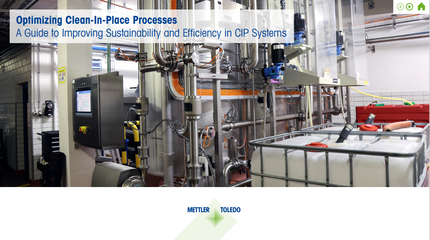 |
Clean-in-Place (CIP) systems use defined and controlled stages to ensure that process equipment is cleaned of any contaminants that could impact product quality or safety.
CIP systems are also important in terms of meeting regulatory requirements such as HACCP and GFSI. The gold standard in CIP is to achieve the highest safety while maximizing production uptime and providing data for auditing purposes regarding consistent cleaning.
When operating CIP systems, care should be taken to avoid high water and energy use, excessive chemical waste and wastewater costs, and process downtime. That is why optimizing Clean-in-Place processes through the use of in-line analytical sensors is so valuable.
This short guide looks at how in-line turbidity and pH sensors can be used to deliver significant and measurable savings in time, water, energy, and chemical use.





